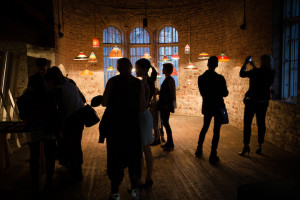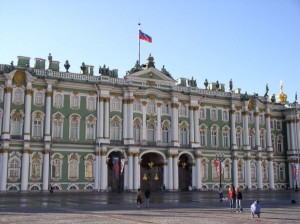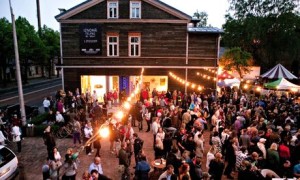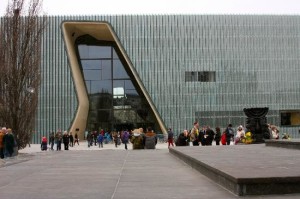Design from Helsinki, museums in St. Petersburg, Art Nouveau in Riga, Hamburg’s Hafencity and Warsaw’s skyline continue to be enhanced by fresh attractions, new museums and urban projects that point to the future and position the region as a modern, exciting and forward thinking Northern and North-Eastern European destination.
HELSINKI – Design Capital
The poster child for minimalistic, functional and clean design, Helsinki was voted World Design Capital in 2012 and is “the” destination for high-end fashions and fabrics, home accessories, furniture and jewelry. The city’s Design District boasts some 200 attractions from shops to galleries, studios to museums which can be explored on your own or by joining an English language two-hour Design Walk.
Helsinki never stands still: visitors can witness the transformation of the industrial and harbor areas at Kalasatama, Jätkäsaari and Kruunuvuorenranta into new attractive districts.
Celebrating its 10th anniversary in 2014, the Helsinki Design Week features exhibitions, seminars, fashion shows, parties and open studios.
Until September 7, 2014, the exhibition Kiasma+Marimekko=Together presents top names of Finnish contemporary art, design and fashion at the Museum of Contemporary Art Kiasma. For design aficionados the centennial jubilee exhibition honoring Ilmari Tapiovaara at the Design Museum is a “must” from 6 June to 21 September.
ST. PETERSBURG – Art and More Art
St. Petersburg’s art galleries and museums are world renowned and include “must-visits” like the State Hermitage Museum, one of the world’s largest museums with some 3 million items, and the State Russian Museum, which features Russian art. However, the city’s smaller and lesser-known museums should not be ignored. They include the Museum of Glass Art in the Orangery of Yelagin Palace and the little-known Stieglitz Applied Arts Museum with some 30,000 exhibits including decorative arts and crafts, furniture, porcelain, chandeliers, metalwork, bass relieves and more.
Art events in 2014 include the 20th European Biennial of Contemporary Art MANIFESTA 10 from June 28 until October 10. Hosted this year by the State Hermitage Museum, the event was initiated in response to the new social, cultural and political reality after the Cold War. 2014’s emphasis will be on 25 years of changing realities and experiences as they transformed within this new global world order. Exhibitions are scheduled in some of St. Petersburg’s most prestigious museums and venues.
RIGA – Capital of Culture 2014
In 2014, a trip to the Baltic Sea Region must include Riga. The 2014 European Capital of Culture is boasting a full calendar of international-scale events, including amber exhibitions, opera and music festivals. Riga’s Old Town already is a UNESCO World Heritage Site and takes visitors back a century with its 800+ restored Art Nouveau buildings; the biggest collection of its kind in Europe.
The city’s Kalnciema Quarter, with its just recently renovated 19th century wooden buildings, has a historic atmosphere while at the same time featuring Latvian and European design venues, fairs, and arts and crafts shops in the quarter’s court-yards. On Saturdays residents frequent the traditional market, and Tuesday’s open-air concerts feature up-and-coming musicians from Latvia.
Riga’s new cultural highlights include the National Library of Latvia, which will open in 2014 on the left bank of the Daugava river. The new architectural symbol for Latvia was designed by Latvian architect Gunnar Birkerts, and with its glassy slopes mirrors the silhouette of Riga’s Old Town.
HAMBURG – Urban Development + Design
Hamburg’s former docklands-turned urban hotspot HafenCity district continues to expand further into the harbor area and is now offering even more attractions for design and architecture aficionados. Stunning contemporary architecture, high-end retail and gastronomy already make the district a must-visit. The city’s new Herzog & de Meuron-designed Elbe Philharmonic Hall will open in 2017. Situated on a former cocoa storage hall and appearing like a tall ship sailing up the Elbe river, it already is the city’s new symbol and most prestigious cultural development site in Europe.
Open since November 2013, the permanent IF Design Exhibition in HafenCity shows the world’s best in communication, product and packaging design. Set to open in late 2014, Hamburg’s Designxport Design Center in HafenCity will be the central networking and communication site for the city’s 14,000 designers, academia, culture and technology. Design exhibitions and a “made in Hamburg” retail space will make the space attractive for visitors.
WARSAW – New Museums, Changing Cityscape
After its destruction in WWII and the Cold War, Warsaw is now well on its way to being an exciting European capital and major tourism destination. The city knows how to enjoy itself, and newly restored districts feature top hospitality, retail and culture. Museums keep opening in Warsaw, focusing on history, art and music.
The newest addition is the Museum of the History of Polish Jews. Designed by Finnish architects Lahdelma & Mahalmäki and Polish Kury?owicz & Associates, the symbolic building already opened to the public in April 2013. The permanent exhibition covering 1,000 years of Jewish life in Poland is scheduled to open October 28, 2014. With its geometric simplicity and wood, stone, copper and brass materials, the museum’s exterior reflects the nearby Monument to the Heroes of the Warsaw Ghetto, while it’s open interior cuts across its entire length with an illuminated, sculptural space created by two waved walls.
Located in the trendy Soho Factory, Warsaw’s new Neon Museum displays Polish neon signs from the communist era.
Since 2013, Polish-born architect Daniel Libeskind‘s Z?ota44 Tower residential building rises high above Warsaw’s cityscape and features 54 floors and a sleek steel and glass design.
ONE Baltic Sea Region (ONE BSR), www.onebsr.eu




